NAPLES, Fla. – A new forecast predicts that Southwest Florida’s single-family home prices will continue to inflate over the next three years into bubble territory.
The Naples-Marco Island metro area’s predicted total appreciation is 31 percent, the top in the state, and Lee County’s is not far behind at 24 percent, according to Local Market Monitor.
While in past forecasts, the firm’s president Ingo Winzer called the Naples-Marco Island metro area’s sizzling price increases justified because prices had fallen so far from their 2006 peaks, he now characterizes them as “worrisome.”
“It’s starting to look like a new bubble is building,” he said. “The market is no longer underpriced.”
The Naples-Marco Island metro area is tied with the North Port-Bradenton-Sarasota and Orlando-Kissimmee for the top spot statewide in terms of expected single-family home price appreciation, according to the Cary, N.C.-based research firm.
Prices in all three metro areas are expected to increase 31 percent from the end of the second quarter of 2014 to the end of the second quarter of 2017.
Winzer said there is no likelihood of a fall in prices in Naples-Marco Island during the period.
“Buyers are nowhere near the top of the market,” he said. “But after that, all bets are off.”
The research firm predicted prices in the Cape Coral-Fort Myers metro area will grow 24 percent over the same period.
The situation is a bit different in Lee County than in Collier, since there is more supply from foreclosed homes and new home building, and fewer cash buyers to run up prices, Winzer said. Consequently, he feels the Cape Coral-Fort Myers market is still undervalued.
“That said, the two markets are of course connected,” he said. “You won’t see a bubble in Naples and smooth sailing further north.”
Winzer said he was particularly worried about the second quarter bump up in home prices in the region, following a long string of quarterly price increases.
Prices rose 15 percent year-over-year in Naples, to $306,768. Cape Coral-Fort Myers prices rose 13 percent, to $193,592, during the same period.
“Yes, the local economy is doing fine, so a recovery in prices has been warranted, but not the sharp increases we’re seeing now,” he said. “This can easily become a speculative second-home boom.”
The usual economic drivers of price increases — an imbalance of supply and demand — are not causing the region’s run-up in prices, Winzer explained.
Population growth is much lower than it was during the boom years, and new home building is keeping pace with demand.
Rather, it’s a financial flight to real estate as the returns on stocks, bonds and other investments become increasingly unpredictable.
“Aging baby-boomers aren’t getting much return on their cash in other investments,” he said.
While increasing prices encourage many buyers to commit to a property before they go even higher, at some point, there’s a limit to how far they can or want to stretch.
And a monthly decline in The Conference Board’s latest Consumer Confidence Index after four consecutive months of improvement is a sign that optimism is wavering. In September, the index stood at 86, down from 93.4 in August.
Even more troubling, builders are becoming less positive too: the National Association of Home Builders/Wells Fargo Housing Market Index, released Thursday, also fell after four consecutive months of gains.
It fell five points in October, to 54, from the previous month.
Moreover, Americans are carrying $11.6 trillion in debt, up 3.8 percent from 2013, according to the Federal Reserve. The average consumer carries $15,607 in credit card debt, $32,656 in student debt, and $153,500 in mortgage debt.
Seeing a growing disconnect between what they want and what they can afford, many buyers are starting to sit on the sidelines, said Naples real estate agent Dona Schrim.
“I think the market is coming to a point where prices may not be able to be sustained,” she said.
http://www.naplesnews.com/breaking-ground/a-building-bubble-new-survey-says-home-prices-will-keep-rising_21381043

